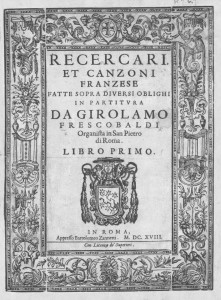As the 16th century drew to a close, Italy became the scene of a fascinating turning point of music history: the strict polyphony of the Renaissance was gradually superseded by a new style known as the Seconda Prattica. Girolamo Frescobaldi lived out this sea change in an immanently concrete manner. For centuries, his ricercars have been considered exemplary for perfect counterpoint, and his toccatas stand for the budding new freedom of music written in an instrumental, soloistic style. The claviorganum (a composite instrument consisting of a harpsichord and an organ), which contemporary accounts held to be the perfect keyboard instrument, permits an unusually wide range of tonal colors, allowing both the clarity of Frescobaldi’s polyphonic writing and the free discourse of his toccatas to be made audible in an ideal manner.
Girolamo Frescobaldi (1583-1643)
Toccata Seconda
Recercar Primo
Recercar Secondo
Toccata Quinta
Recercar Terzo
Recercar Quarto, Obligo mi, re, fa, mi
Toccata Ottava
Recercar Quinto
Recercar Sesto, Obligo fa, fa, sol, la, fa
Toccata Nona
Recercar Nono, Obligo di quattro soggetti
Recercar Decimo, Obligo la, fa, sol, la, re
Eugène Michelangeli, Claviorganum
Toccatas from Toccate d’Intavolatura di Cimbalo et Organo, Libro Primo, Rome 1615
Ricercari from Recercari et Canzoni Franzese, Libro Primo, Rome 1615
Girolamo Frescobaldi: Recercar Secondo (1615)
Eugène Michelangeli claviorganum
